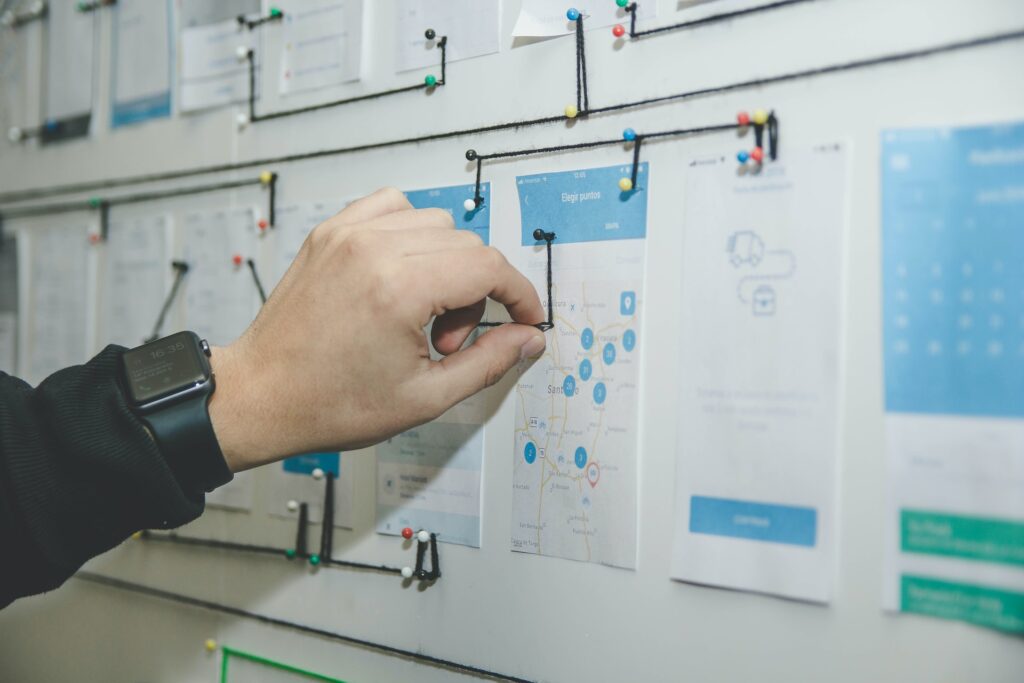On the outside, customer journeys may seem straightforward. You put forward a product and customers buy it. But taking a closer look, the customer journey isn’t so simple. With the average consumer using 10 different channels to communicate with businesses, today’s customer journeys are complicated. With email, Facebook, WhatsApp, and chatbots, marketers have more opportunities than ever to connect with their customers, and thoughtful customer journey maps help us understand what customers want and what they expect from their interactions with a brand.
The Key to Understanding Your Consumer
Defining customer needs, questions, and interactions with your business seem like a lot; however, understanding every consumer’s experience at each stage of the customer journey is important for turning business insights into long-term development strategies. It examines the complete interaction roadmap – from brand discovery to purchasing and more. Companies use customer journey maps to gather those insights on customer expectations to optimize the customer experience and beyond.
What is a Customer Journey Map?
A customer journey map is a visual representation of the customer journey. It helps you tell the story of your customer’s experiences with your brand across all points of contact. From how they first heard of you through social media or advertising to their exact interactions with your product or website, it shows all of the steps the consumer made to complete a purchase across a duration of time.
Whether your consumers interact with your brand on social media, email, your website, or other channels, visually mapping the customer journey helps make sure that they will not go unnoticed. Creating a customer journey map can help a brand visualize how consumers feel at all interactions and touchpoints so they can steer clear of potential issues ahead of time, increase retention, and discover crucial information to make the best decisions for their brand.
A journey map is made up of three main stages: Awareness, Consideration, and Purchase. At each stage in the journey, your customer’s needs and expectations change. A complete journey map identifies those needs and expectations, but it also identifies the key actions in each stage that customers take to meet their goals.
Awareness Stage
During the Awareness stage, customers only begin to recognize that they have a problem or have recently experienced a pain point. While some problems have obvious solutions, many don’t. And during this stage of the journey, your customer may not realize that there’s a solution for their problem, and if they don’t know a solution exists, they can’t purchase from you.
When you’re plotting out your customer’s journey, try to put yourself in their shoes: What are they thinking? How would they describe their problem? Where would they go to research their problem? Answering these types of questions helps you craft messaging that speaks to your customers’ real problems and choose the right channels for delivering your message.
Consideration Stage
Once your potential customer has identified their problem and recognized that viable solutions exist, they begin doing their research. At this stage, they’re considering all options they’re aware of and establishing their core requirements. They’re comparing your product or service with that of your competitors and they’re reading reviews.
The consideration stage is extremely important because at this point, customers are making their consideration set — a shortlist of potential solutions — and they’re establishing their preferences.
As you think about this stage of the customer journey, consider what kinds of content they’re searching for. Is your website a good resource for prospects who want to compare your product or service with your competitors? What pieces of content would make it easier? Is your messaging strong enough to stand out from your competition? Is your key value proposition clearly stated? Are real, trustworthy reviews easily accessible?
Purchase Stage
Once your potential buyer has done all the research they need to make the decision to choose your product or service, maintaining that customer is key to turning them into an advocate of your brand.
Improving the Consumer Experience
Mapping out your current process helps to reflect on what the consumer is observing and may reveal problems that should be solved. How does a customer feel if they can’t contact you on an issue or question? Or, if their product has a problem? This can be helpful for not just the consumer but can inspire your brand to prioritize the consumer experience.
Your journey map can train team members on consumer experience standards and best practices. It is also helpful to deliver a visual description to your employees to map out goals to strategize the next steps.
Benefits of Mapping the Customer Journey
One of the most critical aspects of the customer experience is personalization. The research found that 84% of consumers feel that being treated like a human rather than a number is crucial to winning their business.*
Mapping the customer journey has an array of benefits such as:
- Personalization through a customized experience in each stage of the journey
- Ensures optimization of customer onboarding
- Prioritizes the customer experiences instead of what they encounter
- Creates a logical order to your buyer journey
Mapping the customer journey takes your marketing to the next level. Learn more about how customer journey mapping can help your business. Here at Modern Foundation, we help great companies grow their revenues online. How can we help with your unique situation?







